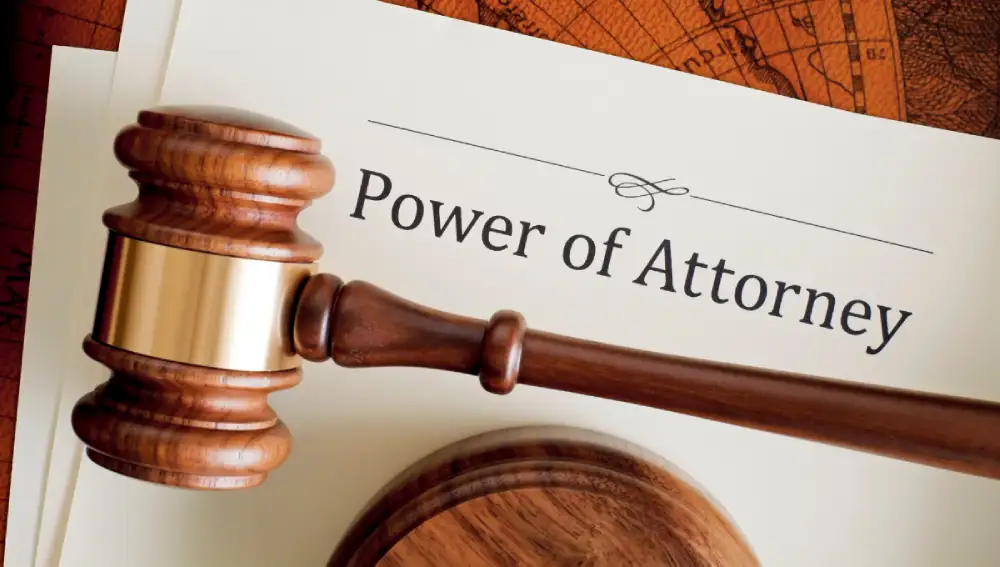Power of attorney is legal permission by the principal (you) to authorize another person, known as the agent, to act for them. This is especially true in legal and business issues. This document may be essential when the Principal can’t exercise their functions or powers, temporarily or otherwise.
There are five power of attorney forms. Here, we will see what documents are needed to make one. We will also cover the benefits of having this legal relationship.
Types of Power of Attorney

There are several types of Power of Attorney, each serving different purposes based on their features:
General Power of Attorney
- A General POA covers broad powers.
- It includes the powers to buy or sell property, run a business, and handle banking.
- Nevertheless, this type of POA is unenforceable upon the incapacitation of the Principal.
Durable Power of Attorney
- Like a General POA, the Agent is given the authority to act for the Principal.
- But, it applies even if the Principal is incompetent.
- For this reason, it is worthwhile to adopt it within the context of long-term strategic formulation.
Special or Limited Power of Attorney
- This gives the Agent powers to do certain deeds or make determinations.
- These include selling property, making some financial transactions, or taking legal action.
- It does not encompass all the spheres of the Principal’s activity as it might be supposed.
Medical Power of Attorney
- A Health Care POA designates the Agent to decide on healthcare issues for the Principal.
- This happens if they cannot decide.
- A living will, which usually comes with a Health Care POA, outlines the Principal’s desires about life support.
Key Documents Required for Power of Attorney
To ensure the POA is legally binding and effective, certain essential documents are required.
These documents not only validate the POA but also help protect the principal and the agent by clearly defining the scope of authority and responsibilities.
1. Power of Attorney Document: The main legal document that grants authority to the agent, clearly outlining the powers given.
2. Identification Proof of Principal and Agent: Government-issued IDs such as a passport, driver’s license, or Aadhaar card (in India).
3. Address Proof of Principal and Agent: Utility bills (such as electricity, water, or gas bills), bank statements, or any official document showing the current address.
4. Photographs: Recent passport-sized photographs of both the principal and the agent.
5. Property Documents (if applicable): Deeds, titles, or any documents related to the property if the POA involves property transactions.
Witness requirements
Witnesses attest to the principal’s identity, mental capacity, and willingness to sign the document without coercion. Most jurisdictions require that a Power of Attorney (POA) be signed in the presence of one or more witnesses to ensure the authenticity and voluntariness of the document.
The number of witnesses required can vary by region. Typically, at least two witnesses are necessary to observe the signing of the POA document.
Identification and Address Proof of Witnesses:
-Witnesses must provide valid identification, such as a passport, driver’s license, or other government-issued ID.
-Witnesses may also need to provide proof of address, such as utility bills or bank statements, to confirm their current residence.
-The identification and address proof of witnesses are recorded to maintain transparency and for future reference in case the authenticity of the POA is questioned.
Notarization and Registration

Notarization adds an extra layer of authenticity and reduces the risk of fraud. This involves a licensed notary public who verifies the identities of the parties signing the POA and witnesses the signing.
In many jurisdictions, notarization is a legal requirement for the POA to be considered valid and enforceable.
Steps for Registering a POA:
1) Ensure the POA document is accurately prepared, including all necessary details and signatures.
2) Visit to the local Sub-Registrar’s Office. Both the principal and the agent, along with witnesses, must visit.
3) Present identification proofs and address proofs of all parties involved.
4) Submit the original POA document along with photocopies for registration.
5) Pay the required registration fees, which may vary by jurisdiction.
6) The Sub-Registrar records the details of the POA in the official register and provides a registration number.
7) Collect the registered POA document after the completion of the registration process.
Common Legal Pitfalls to Avoid:
1) It is mandatory to ensure the POA document is straightforward to avoid misinterpretation.
2) You should define the scope of the agent’s authority precisely to prevent abuse of power.
3) Ensure the required number of witnesses is present and properly documented.
4) Verify that notarization is done correctly by a licensed notary public.
Cost of Making Power of Attorney
The price for preparing a Power of Attorney depends on:
- The location of the attorney.
- The legal system of the state or country.
- The way of preparation.
It can be an attorney’s work or an online form. Templates are generally cheaper than actual lawyers or legal services. This is due to their availability online and the fact that they can be easily copied and distributed.
Conclusion
By exploring the sort of POA and documents needed to make one, you will be in a better position to make good choices that would enhance your legal and financial position. The document requirement varies for general POAs and specific POAs, Be advised to seek advice from legal advisors since Powers of Attorney documents will be modified according to the legal requirements of the country where the client resides.

